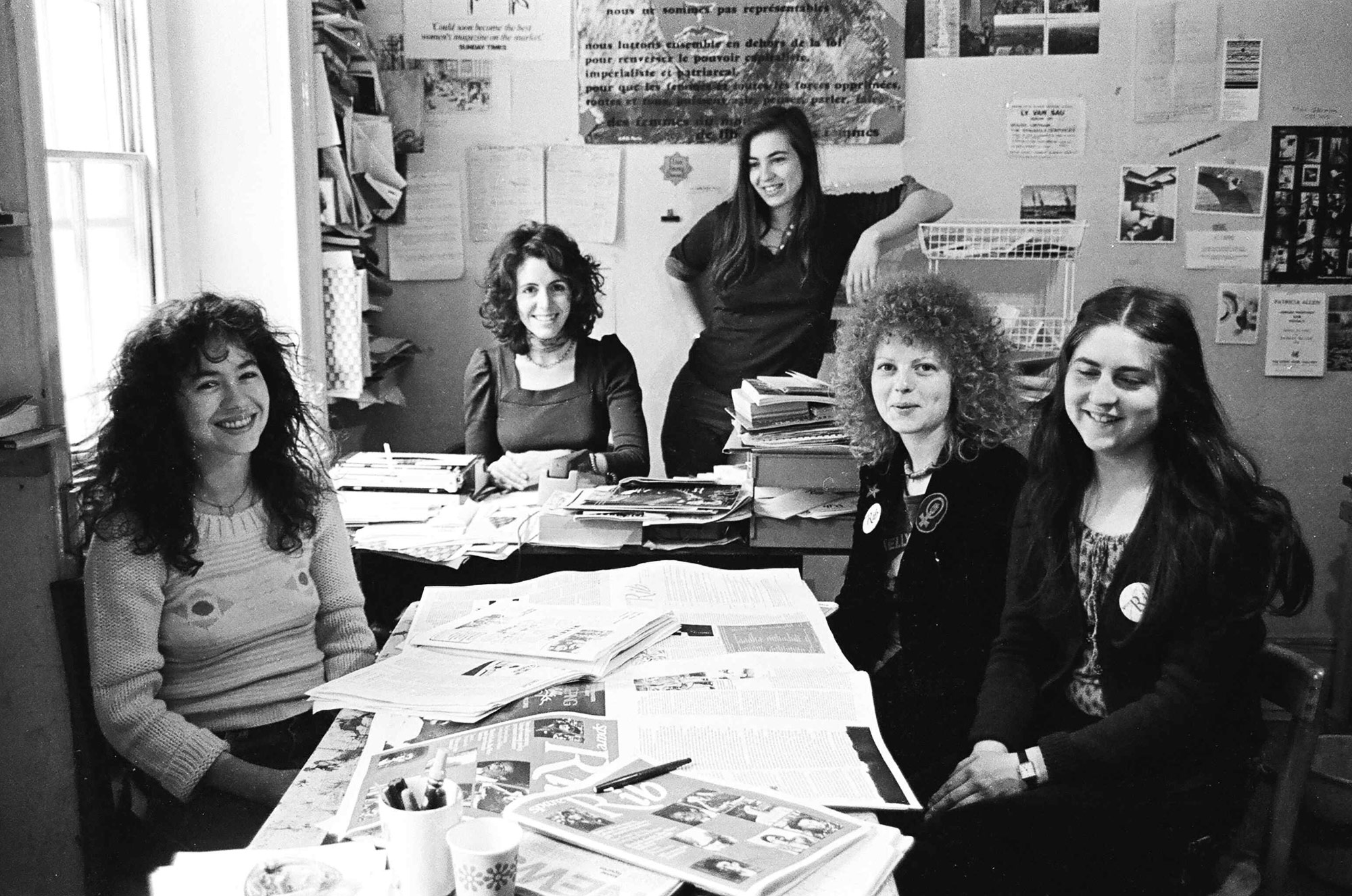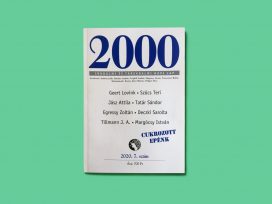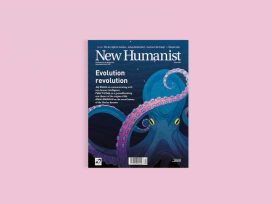The former editor of British Vogue, Alexandra Schulman, probably wished she hadn’t asked the question. Six months after stepping down from the post she had held for twenty-five years, Schulman reflected in late 2017 on the qualities of ‘great’ magazine editorship in a short online opinion piece. The role of the editor, she wrote, was ‘certainly not a job for someone who doesn’t wish to put in the hours’ and not for someone who ‘thinks the main part of their job is being photographed in a series of designer clothes with a roster of famous friends’. What was widely perceived as a blunt criticism of her successor, Edward Enninful, rapidly escalated into a furious controversy about race, class, and diversity at Schulman’s Vogue, as her successor set about dismantling the editorial team apparently made in her image.
While she was raising legitimate questions about editorial temperament and dispositions, Schulman was also finding out that there’s no moment quite like the succession between magazine editors to reveal what’s at stake in this particularly demanding and rewarding post, ‘like abandoning your child to someone else’, as she put it herself. Such is the degree of identification between the individual, the editorial role, and the institutional ethos of the magazine that separation comes at a cost. Personal habitus has long been ceded to organisational habitus and is not easy to reclaim.
For some, that separation is impossible. Earlier in 2017, the legendary founding editor Robert Silvers left the New York Review of Books on his death, the only manner of departure that was ever likely given his monarchic approach to the job. As his obituary in The New York Times claimed, Silvers was ‘indistinguishable from the publication he edited, and it from him’, his ‘almost priestly sense of devotion’ having ensured that he personally had come ‘to embody The Review’s mystique’. But it is here that practice begins to meet myth-making, the role of ‘Editor’ acquiring all the singular charismatic trappings that were long invested in the ‘Author’. Indeed, as a mode of publication that erases individual authorship, the magazine or periodical is founded on an absence that this discursive construction of editorship fills: the ‘editor-function’ becomes an ersatz ‘author-function’. After all, it would be a naive reader in the extreme who thought that the complex and wide-ranging operations of magazine editorship could be fulfilled by a single individual, no matter how talented or well-equipped. In fact, it is not always clear exactly what those operations are, nor what those talents should be, such is the mythology that surrounds editorial practice, at least in the literary and intellectual world. To put it simply, what do editors actually do? And to return to Schulman’s question, what makes a great editor?
These are the questions that I have been preoccupied with for the last two years, looking at more than twenty literary-intellectual periodicals across the twentieth century in French, German and English-speaking contexts: from Samuel Fischer’s Die neue Rundschau and Karl Kraus’s Die Fackel, both founded in the 1890s, to the collectively edited magazines of the women’s liberation movement in the 1970s and 1980s. So, just what have I learnt from my encounter with nearly two hundred individual realisations of the editorial role? Below I offer seven theses on editorship, each exploring the central idea of plurality that emerges as the key feature of all editorial practice
1. Editorship is realised in a plurality of styles and modes
The three most famous editors in my corpus – the Nobel Laureates T.S. Eliot (The Criterion 1922–1939), Thomas Mann (Mass und Wert 1937–1940), and Jean Paul Sartre (Les Temps Modernes 1945–1980) – all functioned in editorial relationships that were formally different from one another. Eliot was very much a singular editor, both as the sole individual formally responsible for all aspects of editorship and also as the only individual to hold that role through the entire publication run of his journal. Indeed, at the outset of The Criterion, Eliot famously took no salary, continuing to work full-time at Lloyds Bank and squeezing his editorial responsibilities into evenings, weekends and holidays. In this respect, he also represents the highly personal, non-professional style of editorship that intrudes into the private sphere, and not without cost to his health. At the opposite extreme, Sartre’s Les Temps modernes was an example of collective editorship from its earliest planning and founding stages. Indeed, Sartre was not even the driving force in the original collective that consisted of his contemporaries Raymond Aron, Simone de Beauvoir, Michel Leiris, Maurice Merleau-Ponty, the political journalist Albert Ollivier, and Jean Paulhan the esteemed former and future editor of the Nouvelle Revue Française. Finally, in between these two extremes, Thomas Mann acted as co-editor of his Swiss exile journal Mass und Wert, in a formal structure of joint editorship with two other figures: Konrad Falke, who officially at least occupied an equivalent role to Mann as Herausgeber, the German designation for the proprietorial role of publishing editor; and Ferdinand Lion, who acted as day-to-day editor-in-chief, or Chefredakteur.
But if these formal roles begin to suggest the plurality of editorial arrangements that exist at different publications, they do not begin to capture the variety of styles and approaches taken in the editorial role, a product not only of the different socio-cultural conditions at each magazine, but also of the multiple and idiosyncratic trajectories of the post holders. The result is an encounter between plural contexts and plural dispositions that generates very variable outcomes in the social practice of editorship. Indeed, the realisations of the editorial role vary with each different editor. Across nine German-speaking periodicals published in the single year 1930, for example, I have identified styles that range from the ‘impresario’ Samuel Fischer and the ‘performer’ Karl Kraus, to the ‘opportunist’ Martin Raschke and the ‘curator’ Martin Bodmer; from the ‘martyr’ Carl von Ossietzky and the ‘subordinate’ Rudolf Kayser, to the ‘insubordinate’ Kurt Tucholsky and the ‘legend’ Siegfried Jacobsohn; from the ‘choreographer’ Oscar Bie and the ‘introvert’ Herbert Steiner, to the ‘anachronism’ Herwarth Walden and the great ‘in-betweener’ Willy Haas.
Of course, this is not to say that patterns do not emerge: at one extreme, the highly personalised, charismatic and performative mode (Fischer, Kraus, Walden); at the other, the more institutionalised, bureaucratic and altogether modest realisation of the role (Steiner, Kayser, Ossietzky); and in between, those editors who successfully create a charismatic myth out of an initially institutionalised role (Haas). This last category, in particular, accommodates some of the most effective editors in my corpus, not only Haas but also Bruce Richmond at the TLS, Jean Paulhan at the Nouvelle Revue Française and Peter Suhrkamp at the Neue Rundschau.
2. Plurality of practice diverges from singularity of discourse
If the formal editorial relationships that held at Mass und Wert, The Criterion and Les Temps modernes were in each case different – singular, joint and collective – the reality of editorial practice diverged considerably in each case from that official designation. On the one hand, each of these famous ‘author-editors’ presented themselves as the dominant intellectual authority for their magazines. Mann and Sartre, for example, authored founding manifestos that appeared in the opening number of their magazines. Mann’s ‘Measure and Value’ and Sartre’s ‘The Case for a Responsible Literature’ even appeared in English translation as stand-alone essays in other publications. In that sense, these three different editorial set-ups were constructed discursively in very similar ways – that is, as the sovereign intellectual project of an individual, male author. And more than this, editorial relationships began to reflect that authority. In Mann’s case, Falke was no more than a convenient figurehead for a project seeking to make use of Swiss neutrality, and Lion very much a junior partner to Mann’s strategic and often all-encompassing interest in editorial duties. In Sartre’s case, most members of the collective fell away rapidly, so that Aron, Paulhan and Ollivier were soon distanced from the core of Sartre, Beauvoir, Leiris and Merleau-Ponty. By the time Merleau-Ponty departed in 1953, Les Temps modernes was unequivocally Sartre’s journal by reputation, no matter what the actual contribution might have been of each individual editorial actor.
But in each case the reality of editorial practice was different again. Eliot was no one-man editor at The Criterion, but rather depended on a whole host of other uncredited editorial figures: Lady Rothermere as financial patron; a range of trusted confidants and strategic advisors, such as Scofield Thayer, Ezra Pound and Eliot’s wife Vivien; Richard Cobden-Sanderson and then Geoffrey Faber as publishers; and the wider circle of advisors that he courted socially through a variety of meetings at the Grove Tavern, the Ristorante Commercio, and Munro’s Poetry Bookshop. A surprisingly similar picture emerges for Mann: dependency on a wealthy female backer in Aline Mayrisch de St Hubert; trusted advisors from within his family and social circle, in his wife Katia and his friends the Havanyis, not to mention the crucial mediating role of Jean Schlumberger; and the essential support provided by the publisher Emil Oprecht. Indeed, it is clear from these cases that publishers are some of the most important editorial actors. The move to Faber was the single most important factor in securing the survival and future success of Eliot’s Criterion, not only through financial and infrastructural support, but also for the access to London’s literary and social networks that it provided. The same went for Les Temps modernes, which in Paris in 1945 was physically and intellectually embedded in the ‘network hub’ that Gaston Gallimard’s publishing house provided. Far from one-man editorships, these were in each case examples of collective social practice.
3. Good editorship demands a plurality of competences
This collective social practice hints at the range of competences involved in magazine editorship. In fact, we can distinguish four principal domains of competence in the editorial function. First, the strategic competences: defining the core ethos and vision of the publication; articulating that vision in order to speak for the magazine; leadership and risk-taking; and all of these skills dependent on a feel for the field and the periodical’s position within it. Second, a set of social competences: an ability to understand and navigate the magazine as a social and network space; a capacity to build and sustain key relationships, not only with editors, staff, and contributors, but also with financial backers, readers, and critics; and, perhaps most crucially, the ability to attract and nurture talent. Third, the expert competences required of the editor, and these in two distinct areas: the subject or domain-specific knowledge required to solicit, evaluate, and revise contributions and, where appropriate, to write copy; and also the technical editorial skills required to bring together and compose an individual number and to edit individual contributions. Finally, there are a whole set of administrative competences that are often overlooked, at least in the literary-intellectual realm: the capacity to organise and manage an editorial office; an eye for detail in the paperwork and correspondence generated by editorial activity; and, not least, the financial acumen to sustain what are often economically precarious ventures.
4. Good editorship is an inherently collective endeavour

Photograph of Spare Rib collective members by Martin Ward, 1974. Source: British Library
It follows, then, that good editorship needs to draw as fully as possible on this wide range of competences. And it follows, in turn, that the most obvious means by which to secure that range of competences is to approach editorship as a collective practice undertaken by a plurality of editorial actors. In other words, we should move from a study of ‘the editor’ to a study of ‘editorship’ or ‘redaction’. This latter term, of course, is familiar enough in the non-Anglophone world and can be deployed to encompass the full range of editorial actors that we encountered, for example, in connection with Mann and Eliot: not only the hierarchy of named editorial staff from the proprietor, editor and editorial committee to a range of assistant editors and sub-editors, but also editorial actors often not recognised as such, from the powerful individual who exercises influence from above, perhaps from a parent institution, to the privileged contributor whose contributions extend into the editorial sphere; not to mention other named roles usually thought to lie outside the editorial sphere, such as the printer or the administrative and secretarial staff.
This is borne out most overtly in the three instances where editorship was self-consciously and ideologically collective, namely the women’s magazines of the 1970s and 1980s: Auf (Vienna), Courage (Berlin) and Spare Rib (London). Even if we limit ourselves to the editors named on the imprint of these three magazines, they were edited over the first ten years of their existence by a combined total of one hundred and fifty individuals. Of course, there were limits and limitations to this collectivity. Vertical and horizontal segmentation persisted to some degree in the redaction of all three publications: poetry and finance were designated roles at Spare Rib, for example, and the design team at Courage existed in a certain state of conflict with the editorial team responsible for content. Divergent views among the editorial collective were inevitable, especially over identity politics, and conflicts and crises ensued that would eventually bring the publications to an end. But, given their precarious financial circumstances and their renunciation of conventional sources of advertising money, what is remarkable about all three publications is how successful they were, both in terms of longevity and of the significance of their highly innovative and influential content.
Undoubtedly it was editorial collectivity, and the renewal of that editorial collective over time, that brought this success. Indeed, diachronic analysis reveals similar and distinctive patterns of continuity and renewal in the redaction of all three magazines. At Spare Rib, for example, some editors had only a short-lived involvement – fifteen individuals were involved in fewer than ten issues – and some had a much more sustained input – twelve individuals edited the magazine for at least four years, or forty-eight issues. However, the long-term involvement of that small number of editors clearly provided a backbone of experience against which there was a steady and cumulative renewal of editorial personnel, always sustaining the collective at around fifteen named editors. It was this same pattern of editorial plurality and renewal that underpinned the success of all three magazines.
5. Singularity remains the dominant scheme of editorial practice
And yet, as we have seen already, overtly collective redaction remains exceptional, certainly in the narratives that circulate about editorship. Instead, it is singular editorship that is overwhelmingly privileged. But it would be mistaken to see this as solely an ideological and discursive construction. One striking feature in a number of editorships is the manner in which editorial practice shifts towards a more charismatic and singular mode over time. This is certainly a common feature for three of the most successful literary editors of the twentieth century, each of whom edited a long-running publication that was firmly embedded in a parent institution: Bruce Richmond, whose TLS was a supplement in every sense to the dominant institution of The Times newspaper; Jean Paulhan, who began as editorial ‘secretary’ at the NRF and for a long time remained in the shadow of André Gide as an employee of Gallimard; and Peter Suhrkamp, who was recruited in 1930 by the publisher and proprietor Samuel Fischer to edit his house journal Die neue Rundschau.
In all three cases, the editors’ reputations were subordinate to those of the publications; all three were reserved and private individuals who were content to work within existing structures; and all three were careful and sensitive readers, adept at mediating the demands of contributors. Over time, however, all three developed formidable reputations that began to transcend their publications, and all three began to operate in a more autocratic fashion, struggling to delegate many of their responsibilities. Above all, these three editors achieved a degree of self-actualisation through their work as editors that they had not previously achieved in their careers, and it was that identification with the symbolic capital attached to the habitus of editor-in-chief that shaped their increasingly singular practice.
At this point it is worth invoking Michel Foucault’s reflections on the force exercised on authorial practice by dominant notions of authorship. ‘I believe that the individual who sets out to write takes upon himself the function of the author’, wrote Foucault in the ‘Order of Discourse’ – ‘how he writes is prescribed by the author-function, as he receives it from his epoch or as he modifies it in his turn’. Editors might be thought of in a similar way. In other words, dominant modes of editorship in any given social and historical context cannot help but influence the actual editorial practice of individuals in that role.
What is clear is that editors of literary-intellectual magazines in the twentieth century continued to be influenced by a scheme of practice that was shaped by singular, charismatic, and male exemplars, even when their own modes of practice were initially rather more varied. Indeed, editors in the German literary field in the first half of the twentieth century operated self-consciously in a genealogy that ran from the original ‘one-man’ editor, Maximillian Harden (Die Zukunft, 1892–1922), through a generation of singular editors such as Karl Kraus (Die Fackel, 1899–1936), Franz Pfemfert (Die Aktion, 1911–1932), and Herwarth Walden (Der Sturm, 1910–1932). When Willy Haas accepted Ernst Rowohlt’s offer in 1925 to become his employee and edit a new Berlin literary weekly, Die literarische Welt, he was installed in a modern, professionalised redaction in which editorial functions were differentiated and distributed. Two years later, he had bought Rowohlt out and adopted a charismatic style of editorship that owed much more to Kraus, whom he had admired so strongly during his formative Vienna years. The editor-function as it was received by editors in the twentieth century was overwhelmingly singular, and this shaped not only the discursive construction of editorship but its reality, as editors converged towards that dominant scheme of practice.
6. Great editors are plural actors
Significantly, though, the legend that Haas established for himself as editor admitted a conception of editorship distinct from that embodied by Kraus of the ersatz author and originating intellect. Haas has tended to be recognised not for his own creative talents but as the archetypal literary mediator, as a catalyst and broker. Haas’s most comprehensive and reliable biographer, for instance, defines his childhood and youth as one that set him on the way to being a ‘literary intermediary’, and the sobriquets that he has attracted have confirmed this image: the alert ‘witness’ to changing times; the ‘middleman’ between creators and their readers; the great ‘initiator and organiser’; the ‘broker and keeper’ of world literature; one of the important ‘guardians’ and ‘intermediaries’ of the western tradition. Here, a type begins to emerge, like Paulhan, who was another accomplished intellectual broker, or Suhrkamp, who flourished because of his ability to combine literary sensibilities with financial acumen. In the terminology of Pierre Bourdieu’s cultural sociology, these are archetypal ‘double personages’. Much like the gallery director or publisher, the editor has to combine ‘completely contradictory dispositions’, both internal and external to the intellectual field.
Except that the competences and dispositions of the most able editors have to extend beyond a simple duality. The most complete editors – like Haas, Paulhan or Suhrkamp – may not have been solely responsible for the full range of editorial functions. Indeed, their effectiveness relied on their capacity to sustain effective relationships with others in a wider redaction. But they exercised responsibilities that ranged furthest across the four competences set out above: they rested primarily on their own technical expertise, above all in the practical and creative side of periodical composition, the feel for the make-up of a number; but they also thrived as mediators and brokers, holding together the social networks of their publications; and increasingly, they took responsibility for the strategic and visionary dimensions that had initially rested with their predecessors and with the institutions founded by others. In this sense, the best editors were ‘plural actors’, to use Bernard Lahire’s expression: social actors who, first, could draw on a wide range of dispositions from their varied trajectories of socialisation and, second, were adept at activating and deactivating those dispositions according to the social contexts in which they operated.
7. Successful editorship is determined by its plural social conditions
There is no doubt as to who was the most able and most complete editor among Sartre, Eliot, and Mann, nor as to which of them exercised the narrowest, least complete realisation of the role. By inclination, Sartre took little or no interest in day-to-day editorial duties and limited himself almost entirely to the charismatic and strategic side of the role. His was only a very limited form of editorship. Eliot, by contrast, was adept across the full range of competences. His own professional and intellectual trajectory – as poet and critic, but also at Lloyds Bank and then at Faber – gave him an unparalleled and uniquely appropriate range of skills and dispositions, together with the drive and flexibility to make the most of them. He was certainly the most plural of actors. But the success of these editors’ publications notably failed to reflect their individual editorial qualities. While The Criterion led a difficult life and was close to failure before Faber’s intervention, Sartre’s Les Temps modernes was immensely successful, in terms of both longevity and reputation. By the same token, the energy that Mann brought to bear across a range of editorial duties and his immense cultural capital could do nothing to prevent the abject failure of Mass und Wert, which folded after three years.
In part, this confirms the importance of the wider redaction: Beauvoir’s tireless efforts, Leiris’s literary taste and Merleau-Ponty’s management – not to mention Gallimard’s infrastructure. But the principal reason for the varying outcomes of these editorships lay not in the skills and abilities of the redaction, but first and foremost in the social, political and cultural conditions in which the magazines were founded. Conceived in Swiss exile at the end of the 1930s, with its editor and contributor networks disintegrating and its readership dispersed, Mass und Wert stood little or no chance of success, regardless of skilled its editors might have been. By contrast, Paris in 1945 was the most fertile of environments for a new literary-intellectual magazine following the rupture of the liberation. The editorial offices were overflowing with contributions, as the new periodical exploited the concentrated intellectual networks of the French capital and the thirst for a new cultural beginning. The success of editorship depends ultimately on the richness and plurality of the social conditions in which it operates.
It is clear that editorship remains bound in a paradox. On the one hand, editorship is inherently plural and social and resists reduction to a single individual. On the other hand, the individual editor remains dominant, not only in ideological discourses of editorship but also, in many cases, in the influence they exercise on their publication and the range of responsibilities that they undertake. As the case of Alexandra Schulman at Vogue makes clear, this holds not only in the literary and intellectual world but also in more popular and commercial sectors. No matter how many other factors were at play, Schulman was held solely accountable for the publishing policy of British Vogue; in the controversy that followed her departure, the entire plurality of the editorial team was reduced to subordinate realisations of the singular Editor. A sociological approach to editorship insists on revealing and recognising editorial plurality in its many forms, but it must also acknowledge the counterforces acting on editorship that constrain this plurality. In the encounter between the plural dispositions of individuals, the more singular, organisational identity of the magazine, and the complex dynamics of the field, these forces come into productive conflict. The study of editorship is the study of those encounters.
This article is the first in a series on the history of cultural journals curated by the Working Group on Periodical Studies in collaboration with the Eurozine journals network.










